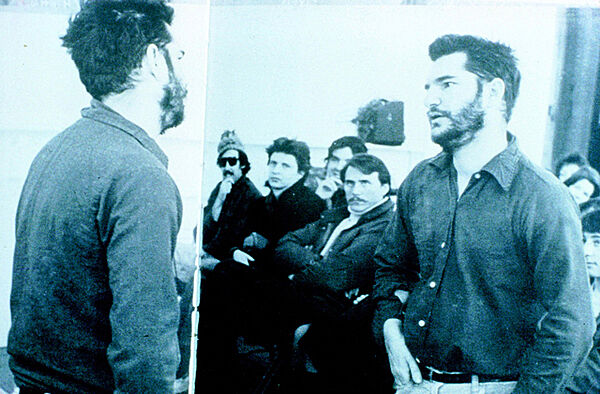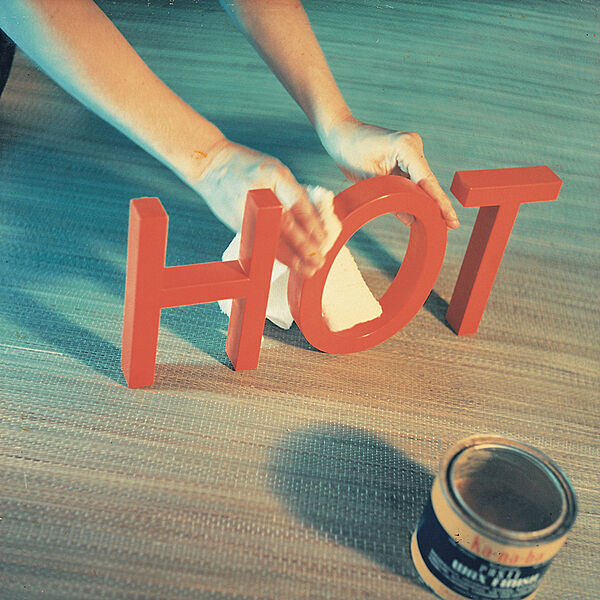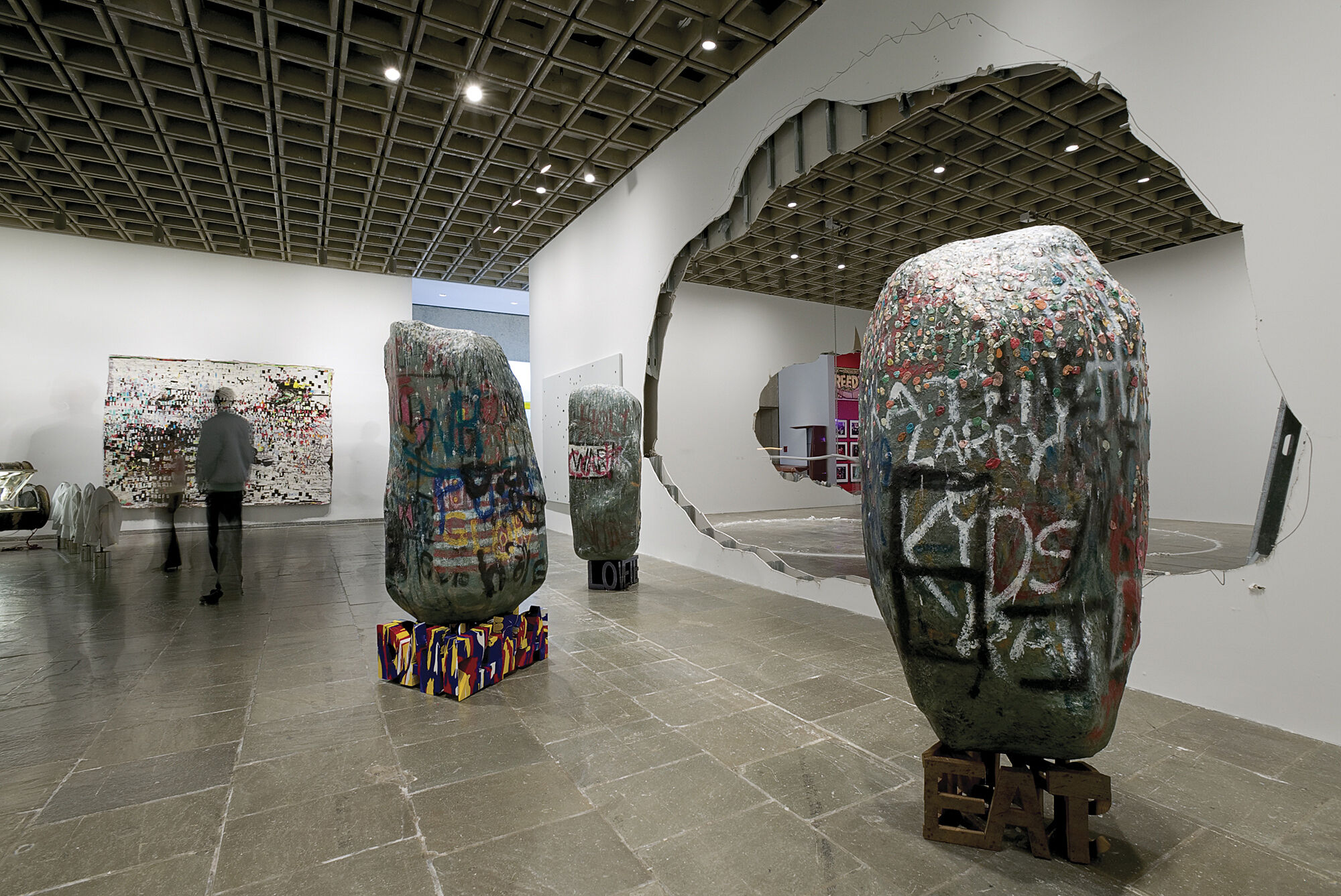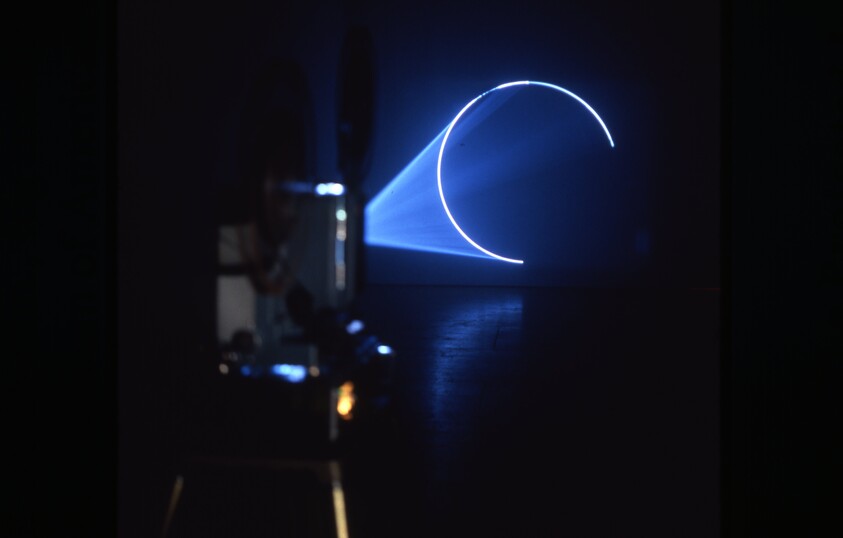Dan Graham
1942–2022
In his sculptural “pavilions” made of two-way mirrors, closed-circuit video systems, and performances, Dan Graham endeavors to break down the barrier between artist and audience. Graham came to art first as a critic; then, in 1964, as the cofounder of a short-lived New York gallery that presented some of the most important artists of the day; and, in 1965, as a conceptual artist, staging works directly in the glossy pages of magazines.
From the beginning, Graham’s work pointedly deflected emphasis away from the traditional, static art object and toward spectators’ self-conscious, active perception. In 1966 he devised Project for Slide Projector, his first exploration of the properties of transparency, reflection, and three-dimensional space; its use of plate-glass surfaces anticipates his architectural pavilions by more than a decade. Moving a camera clockwise around the sides of a small glass box, Graham photographed all four faces, with the focus of each shot moving progressively from the exterior surface to the center. Graham then placed a smaller glass box within the first and repeated the process five times, each time adding a successively smaller box. The carousel projects eighty slides in forward and reverse sequence and then repeats them again. As Graham wrote: “The sculpture is the photographic residue, and effect of projected light. What is seen must be read in terms of the conventions of still photography: two-dimensional objects which appear at once solid and also as transparent, and which function simultaneously in two entirely different planes of reference (two-dimensional and three-dimensional).”
Introduction
Graham disavowed Conceptual Art as a term, and identified with no movement or creed, though his work with video, installation, photography, architecture, and text may be considered examples of the genre. He exhibited the work of his peers Donald Judd, Sol LeWitt, and Robert Smithson at the John Daniels Gallery in New York, where he was briefly the curator and director, before showing alongside these and many other Minimalists and Conceptualists during the 1960s and 70s. In the 1980s, Graham became an active observer of New York’s punk and experimental music scenes, collaborating with Sonic Youth and befriending Glenn Branca. His book and film essay Rock My Religion of 1983-1984 linked contemporary music groups to the ecstasy of religious communities. His pavilion structures of glass, steel, and mirrors dominated the latter half of his career, from the 1990s.
Country of birth
United States
Roles
Artist, art critic, conceptual artist, director, founder, installation artist, painter, performance artist, photographer, sculptor, video artist, writer
ULAN identifier
500115596
Names
Dan Graham, Daniel H. Graham, Daniel H. Graham, Daniel Harry Graham, Dan Grahan, Dan Gureamu
Information from the Getty Research Institute's Union List of Artist Names ® (ULAN), made available under the ODC Attribution License. Accessed December 22, 2025.







